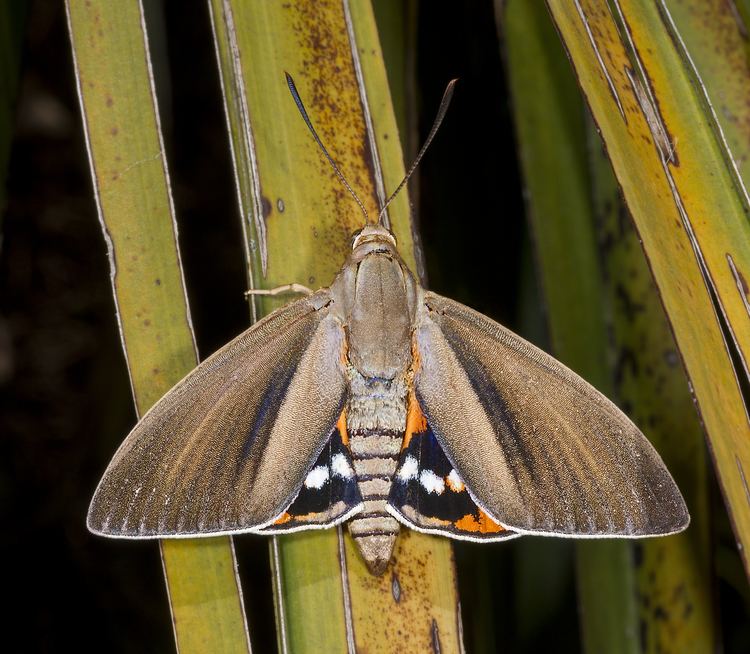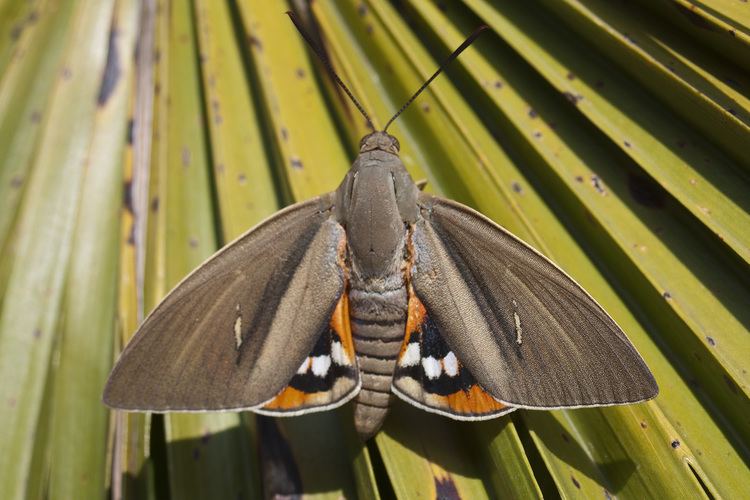Rank Species | Scientific name Paysandisia archon Higher classification Paysandisia | |
Genus PaysandisiaHoulbert, 1912 Similar Butterflies and moths, Insect, Rhynchophorus ferrugineus, Castniidae, Chamaerops | ||
Damage caused by paysandisia archon
Paysandisia archon is a moth of the family Castniidae. It is native to Uruguay and central Argentina and has been accidentally introduced to Europe, where it is spreading rapidly. It is considered the only member of the genus Paysandisia.
Contents

German naturalist Hermann Burmeister described the species in 1879 as Castnia archon.
This is a very large moth with a wingspan of 90–110 mm. The forewings are dark green with brown streaking, the hindwings are bright red with bold black and white markings. The females, generally larger than the males, are easily recognized by the prominent ovipositor. Like other castniids, this species flies by day and has clubbed antennae and is easily mistaken for a butterfly. The adults fly from June to September.

The larva is whitish and maggot-like and feeds in the stems and trunks of palms (see list below for recorded food plants). In its natural range, the damage done by the larvae is unobtrusive and the species is not considered a pest but the species is causing increasing concern in Europe because of the sometimes fatal damage being caused to native and exotic palms. Since arriving in the south of France in the mid-1990s (probably in mature specimens of Trithrinax from Argentina), it has spread along the Mediterranean coast to parts of Spain, Italy and Greece and it is feared that without effective control, it could spread to areas where palms grow throughout the region. One has also been reported from England, in West Sussex in 2002 and one record in 2006 from the Netherlands, in Zoetermeer. The species pupates in a cocoon incorporating palm fibres within the larval gallery.

Paysandisia archon
Natural range
Introduced range

